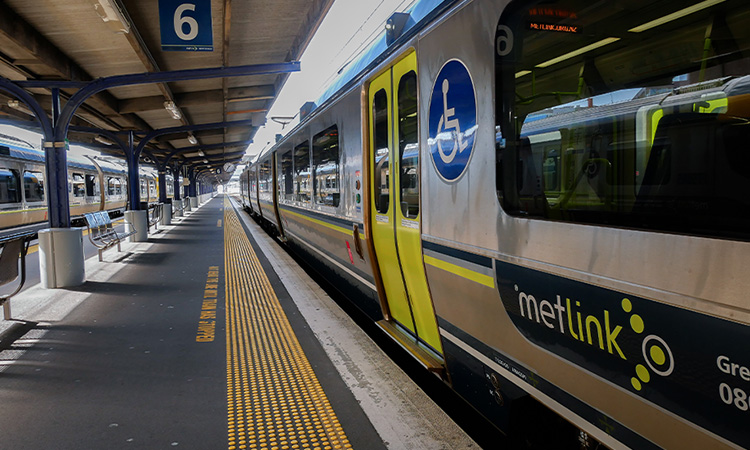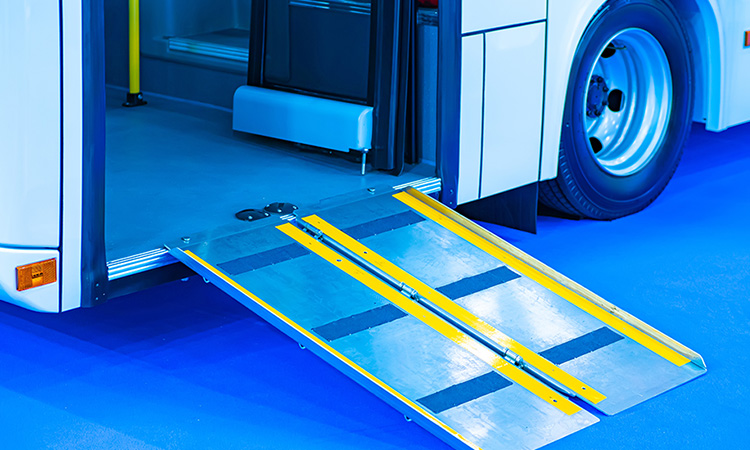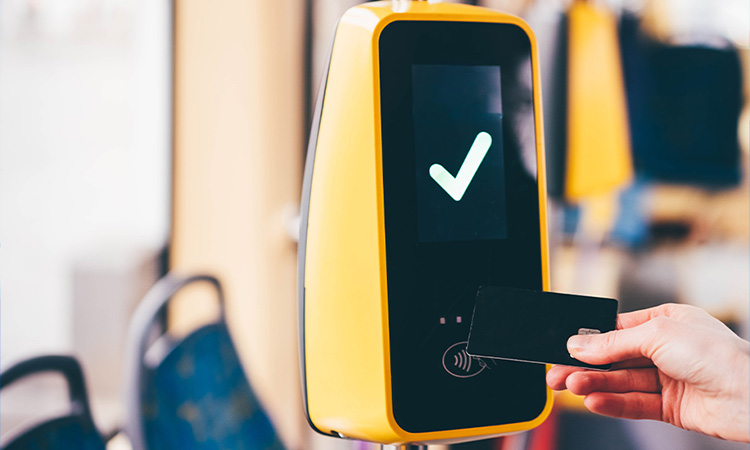Breaking barriers: Metlink’s blueprint for a more accessible Wellington region
- Like
- Digg
- Del
- Tumblr
- VKontakte
- Buffer
- Love This
- Odnoklassniki
- Meneame
- Blogger
- Amazon
- Yahoo Mail
- Gmail
- AOL
- Newsvine
- HackerNews
- Evernote
- MySpace
- Mail.ru
- Viadeo
- Line
- Comments
- Yummly
- SMS
- Viber
- Telegram
- Subscribe
- Skype
- Facebook Messenger
- Kakao
- LiveJournal
- Yammer
- Edgar
- Fintel
- Mix
- Instapaper
- Copy Link
Posted: 3 October 2023 | Bonnie Parfitt - Metlink | No comments yet
Bonnie Parfitt, Senior Manager – Network and Customer at Metlink, provides insight into the comprehensive and transformative journey undertaken by Metlink to enhance accessibility and inclusivity within the public transport network of the Wellington region.


Credit: Metlink
Despite people with disabilities making up 22% of the Wellington region, only 1% of Metlink’s annual public transport boardings are taken by this community. For people with disabilities who are daring enough to use public transport (PT), the experience can cause anxiety and stress and, when something doesn’t go to plan, disaster!
For people with disabilities daring enough to use public transport, the experience can cause anxiety and stress and, when something doesn’t go to plan, disaster”
While we know that public transport can’t be everything for everyone, statistics show that there is significant room for improvement in making PT more accessible and easier to use for people with disabilities.
The Greater Wellington region has the highest per capita use of PT in New Zealand. The Metlink PT network includes 100 bus routes, five rail lines, 53 stations, a harbour ferry and a total mobility service (a subsidised transport service for people with accessibility needs), across a sprawling rural and coastal urban region. In recent years, Metlink has made steady progress in improving accessibility, with more attention given to vehicle and bus stop design, and accessible information, including website and app upgrades.
However, accessibility barriers span all areas of Metlink’s services, from buildings and infrastructure to information. And, for people with disabilities, significant changes to public transport, such as kneeling buses, only come about through the tireless advocacy of the community.
The road to inclusivity begins with a charter
Traditionally, New Zealand hasn’t had a strong legislative framework requiring public transport to be accessible. Therefore, the approach taken from jurisdiction to jurisdiction is ad-hoc, bespoke and advocacy-led.
On the advice from the Wellington community, a written charter was needed to cement Metlink’s commitment to accessibility improvements and to provide a foundation for the work needed to create a truly accessible network.
So, how is Metlink getting there? In 2021, Greater Wellington adopted an accessibility charter, co-developed with insight from disability advocates and the community. The charter sets out five commitments for Metlink:
- The development of an action plan
- Accessible network design
- Accessible infrastructure
- Accessible information
- Education and training.
These commitments represent a shift in the regional council’s and Metlink’s approach to how we improve access to PT – from ad-hoc activities to a structured approach. Co-creation with communities is at the heart of the charter, ‘Nothing about us without us’ is a guiding principle in this work. The charter was just the beginning and, in the year that followed, Metlink looked to turn the charter into something more tangible for communities.


Developing the action plan
Prioritising accessibility improvements and identifying the small changes that could make a big difference came first. Focus groups, interviews, workshops and many in-depth discussions with people with disabilities, public transport users and their advocates, the Metlink team, frontline staff and trusted advisors, including representatives from Greater Wellington’s Public Transport Advisory Group, were carried out.
Reviewing research reports, looking at approaches from other public transport authorities, as well as analysing Metlink feedback and patronage data were key to the plan’s development.
The most useful tool in uncovering the real problems that people faced was dialogue. We asked people to describe their public transport journey to establish where their difficulties and challenges lie”
But the most useful tool in uncovering the real problems that people faced was dialogue. We asked people to describe their public transport journey to establish where their difficulties and challenges lie. These conversations gave us a realistic and contextual understanding of how each little difficulty, inconvenience or barrier stacked up.
This rich insight gave Metlink a deeper understanding of the emotional experience and impact on passengers with disabilities, and on frontline staff attempting to provide ‘good’ service but falling short because of a lack of training.
It showed the lengths that people with disabilities must go to in order to plan and complete a journey. Something many people take for granted – for example, buying a paper ticket at a train station can be frustrating and stressful for our deaf and hard-of-hearing passengers. Train stations often echo and ticket offices behind glass put a literal barrier between staff and passengers.
Many of our conversations naturally led to New Zealand’s buildings and infrastructure, and the historically poor design decisions that the accessibility community continues to endure to this day. Unfortunately, remedying poorly designed buildings is expensive and annual budgets are limited.
Compounding this, Metlink doesn’t own or control all assets involved in the PT journey and outsources its operations. So, crucially, the plan identifies areas where we could affect change quickly, maps the areas where there are complexities and gains support and ‘buy-in’ from those who will be responsible for delivering actions and making funding decisions along the way.
Prioritising short-term, low-cost actions that benefit many is vital, as is creating the plan for longer-term fundable packages of activities, so that they can be included in annual and long-term council and government business planning, where larger or more substantial budgets can be secured.
Highlights of the plan
The actions in the plan 2023-2024 are grouped into packages of inter-related activities, covering:
- Bus stops, train stations and ferry wharves accessibility improvements
- In-person support
- Accessibility training
- Vehicle accessibility improvements
- Accessibility technology aids
- Awareness of invisible disabilities
- On-demand and community transport
- Fully accessible PT corridors.


Measures of improvement
A group of smaller and lower cost actions started in 2023/24, and there’s more to come in 2024/25.
These small improvements are already making a big difference and include working with the community to develop a more consistent and comprehensive approach to staff training.
Introducing Snapper card payments on train, means that paper tickets are a token of the past. Therefore, deaf and hard-of-hearing passengers can now use self-service kiosks, cards and apps – significantly improving their station experience.
Similarly, our roll-out of on-bus announcements removes the challenge for our blind and low-vision passengers of keeping track of their journey.
This process is ongoing, it is not linear, or something done and then put away as we move on to something else. Instead, starting small, building trust and delivering on our commitment is how we will achieve our vision”
Getting the volume, sequence and message of the announcement just right takes a fair bit of testing and close collaboration with passengers, and flexibility in our solution continues to be the winning formula.
We’ll be measuring and monitoring progress to see if we are improving access by a great degree. Ideally, as a result of the actions agreed between Metlink and the community, we will see fewer complaints and more people with disabilities travelling on public transport in our region. The accessibility charter will be reviewed annually, and the plan continues to evolve with input from the community.
Work will also continue to influence and advocate for change in areas beyond our direct control as a public transport provider, as we know that a journey does not begin and end once someone steps on-board our services.
Unlike other aspects of public transport planning and delivery, this process is ongoing, it is not linear, or something done and then put away as we move on to something else. Instead, starting small, building trust and delivering on our commitment is how we will achieve our vision.


Related topics
Passenger Accessibility, Passenger Experience, Public Transport
Related modes
Bus & Coach, Metro
Related cities
Wellington
Related countries
Australia, New Zealand
Related organisations
Metlink
Related people
Bonnie Parfitt







